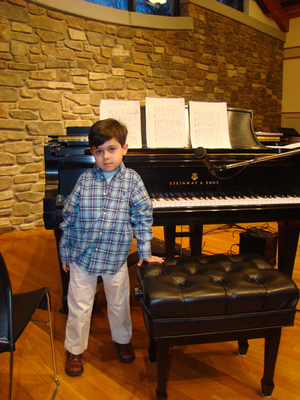Looking at a piece for the first time can be very intimidating. Oftentimes students do not know where to begin with their new piece. Teachers can give an introduction to the piece, but it is the student that has to partake in the process of learning it. They must know and understand all aspects of the piece before they can begin. I have just started reading a book entitled A Piano Teacher’s Legacy, which includes articles and speeches made by Richard Chronister. Upon reading this book I feel as though I have grown as a teacher and I would like to share some of the concepts brought up in this book about how a student learns.
Oftentimes students do not know where to begin with their new piece. Teachers can give an introduction to the piece, but it is the student that has to partake in the process of learning it. They must know and understand all aspects of the piece before they can begin. I have just started reading a book entitled A Piano Teacher’s Legacy, which includes articles and speeches made by Richard Chronister. Upon reading this book I feel as though I have grown as a teacher and I would like to share some of the concepts brought up in this book about how a student learns.
Based on the work of Maria Montessori, there are three stages of learning. The first stage is preparation, which is to place the new object into the student’s environment. The teacher casually talks about this object and this in turn introduces it to the child. Eventually the student will start associating the object with the word. By not putting any pressure on the student to remember something he will naturally progress into the second stage of learning, presentation. In this stage the teacher is continuing to help the student by naming the object. However, the child should be able to correctly identify the object amongst others. It is interesting how there seems to be a demand for the student to name an object, but is this really the most important aspect? As teachers, we should realize that the name of the object will come in time; the more important aspect is that of learning. The final stage of learning is association. This is when we ask the student what the object is and he in turn will say the name of the object, instead of just pointing it out. Every student enters each stage when he is ready, so instead of always “telling” the student, think about how beneficial it is to allow each to learn at their own pace.
Amnada Prakopcyk, Piano Teacher


COMMENTS